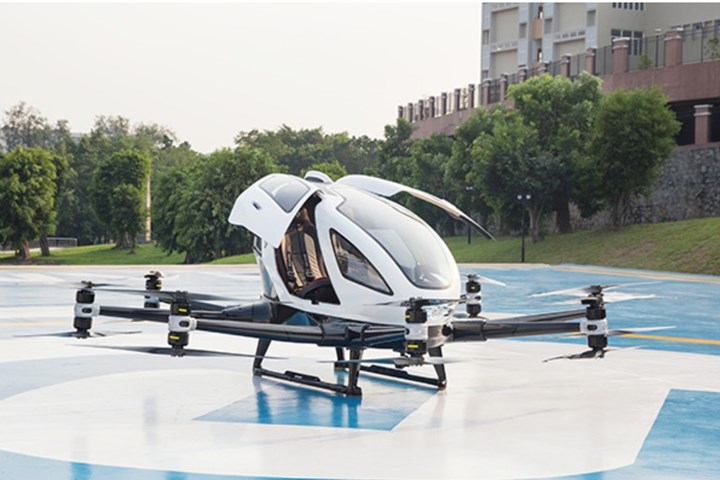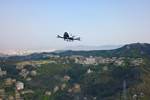EHang 216 AAV obtains Special Flight Operations Certificate
The certificate issued by the Transport Canada Civil Aviation (TCCA) will enable routine trial flights in Québec, Canada.

Source | EHang
(Guangzhou, China), an autonomous aerial vehicle (AAV) technology platform company, announced on July 29 that its EHang 216 has obtained a Special Flight Operations Certificate (SFOC) issued by the Transport Canada Civil Aviation (TCCA), the civil aviation authority in Canada. The company says this is another milestone in regulatory breakthroughs for EHang 216 and the first of this kind of permit for periodic operations of passenger-grade AAVs in North America.
With the certificate, EHang says trial flights of its EHang 216 AAVs can be routinely conducted in the Québec province. The company notes that last September it was invited to showcase its aircraft at the International Civil Aviation Organization’s (ICAO) 75th anniversary ceremony in Québec, Canada. The EHang 216 AAV is said to have been highly appraised by ICAO and other aviation authorities from different countries, including the U.S. Federal Aviation Administration, the Civil Aviation Authority of Norway and the Civil Aviation Administration of China. According to EHang, this achievement is also an important foundation for future urban air mobility (UAM) operations in Canada.
“We are pleased to see the EHang 216 receiving such an important certificate from the TCCA, following consecutive flight approvals received from aviation authorities,” says EHang founder, chairman and CEO, Huazhi Hu. “It conveys a positive signal from global regulators to establish a supportive and sustainable regulatory environment for the UAM industry. As a leader in the industry, EHang will continue to work with its customers and partners to provide safe, autonomous and eco-friendly air mobility solutions to the world.”
Related Content
-
Development of a composite liquid hydrogen tank for commercial aircraft
Netherlands consortium advances cryogenic composites testing, tank designs and manufacturing including AFP, hybrid winding, welding of tank components and integrated SHM and H2 sensors for demonstrators in 2025.
-
Plant tour: Collins Aerospace, Riverside, Calif., U.S. and Almere, Netherlands
Composite Tier 1’s long history, acquisition of stamped parts pioneer Dutch Thermoplastic Components, advances roadmap for growth in thermoplastic composite parts.
-
“Structured air” TPS safeguards composite structures
Powered by an 85% air/15% pure polyimide aerogel, Blueshift’s novel material system protects structures during transient thermal events from -200°C to beyond 2400°C for rockets, battery boxes and more.



